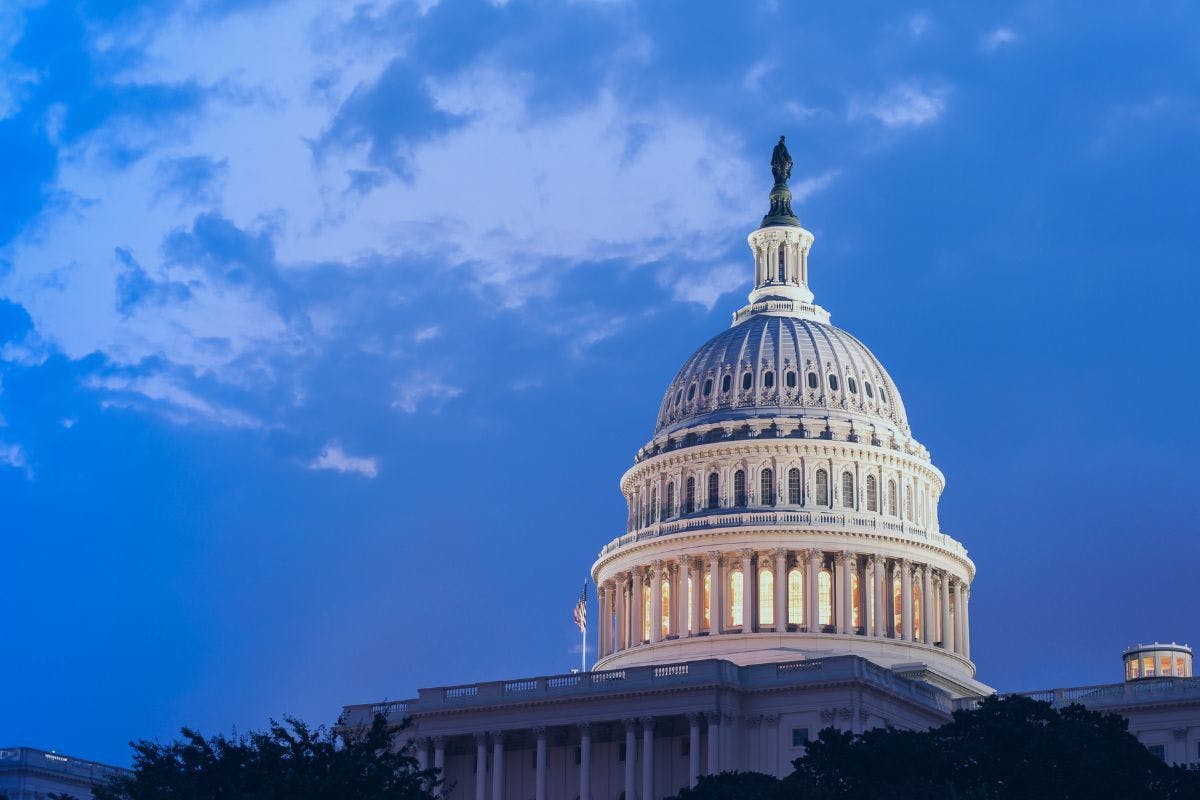The New Utility Revolution
Last edited

Author
Chris Kemper
Chairman, Founder, Chief Executive Officer & Chief Climate Educator

Editor
Ryan Barnett
SVP, Policy & New Market Development

A statement of ideals and intentions, the New Utility Revolution is a building block, which I look forward to iterating upon over time with the input from allies and adversaries. Together, we need to push forward with the New Utility Revolution as a bigger challenge awaits us: The halting of Climate Change.
Introduction
We are on the brink of a New Utility Revolution. Our country’s entire energy system is soon to be rebuilt. We will soon live in a future where our main energy sources are decentralized, renewable, and sourced from the sun and wind right here in the USA. Where individual citizens own their own energy production, protecting their homes and their families from blackouts - the consequence of a decaying and failed grid system.
But, there are forces at play that never want us to see this Utopia. The Old Utility Guard, which has invested hundreds of years and billions of dollars to protect the status quo.
See how much you can save with home energy changes
Utilities & Antiquated Technology
Americans have always been innovative. In the 1800s, the first major technology revolution was underway; Rockefeller led Oil, Ford the automobile, and Edison the electricity grid. Within a brief amount of time, the world transitioned from lanterns powered by whale oil to buildings powered by coal and oil; it was a whiplash of innovation and required conviction of innovators to drive the revolution. Electricity was generated at a central power plant, transmitted via a grid, and consumed across an automobile-induced, sprawling country. Growth was underway and it was clear that technology was the driver.
The centralized energy model came at enormous financial costs; the investment to build the projects were some of the largest infrastructure costs known to mankind. Like everyone else, investors want to protect their investment. When new power technologies emerged that threatened the investments made, it was natural to resist innovation. But, some things are inevitable.
The Old Utility
Over a period of time, three main problems came to light with the fossil fueled centralized energy model, which I call the ‘Old Utility’:
- The grid has become difficult to maintain and is now a leading source of liability for utility companies;
- Energy input has become the single largest source of global emissions, a leading contributor to climate change; and
- The cost of the aging technology was not fully absorbed by the rate paying consumer. Costs such as environmental externalities (climate change) and geopolitical instabilities (foriegn affairs) began to outweigh the benefits. And, like any equation, whenever the costs exceed the benefits it is time to reevaluate the inputs and find balance.
Remedying the Old Utility will require harnessing the modern day capabilities of software, data science, and hardware innovation such as renewable energy. To face those truths means that the Old Utility will need to be reinvented. For decades people have relied on policy makers and politicians to help solve this problem, because, afterall, climate change is a threat to the public good.
Similar to most major technological revolutions, it's the private sector that drives true innovation with pure will and force. To place this into context, it’s helpful to highlight a case study - the telecommunications sector. Similar to electricity technology, telecommunication technology was innovative in the 1800s. The landline dominated the telecommunications sector for more than a century. But, technology evolved and the landline became redundant when mobile telecommunication technology evolved and gained traction. The landline telephone companies fought hard to maintain and defend their business model and their antiquated technology; this fight lasted decades. In the end, the landline was no more and market demand tilted in full favor of the smarter, tech-enabled product. The similarities to the utility industry is wildly similar.
Like the telecommunications sector, the Old Utility resisted the inevitable technology evolution. Policy, legislation, and other tactics are part of a full offense campaign to help slow a financially disruptive transformation.
Unfortunately for the Old Utility, the delay of technology transformation comes at a major, long-term societal cost. The Old Utility extracts finite natural resources, typically fossil fuels, and expends emissions, which create the irreversible trend of climate change. Isolating the pressing issue of climate change, perhaps the Old Utility, in its current format, could remain in place with a lesser level of urgency.
The truth is that climate change is a byproduct of the Old Utility and other lagging technology-driven sectors such as transportation. Make no mistake about it, climate change costs us billions today and will cost us trillions tomorrow. There is a growing need to rapidly accelerate the transition to a cleaner, cheaper, smarter energy model - the New Utility.
See how much you can save with home energy changes
The New Utility
The New Utility is a distributed, decentralized energy source. It’s on-site renewable energy, storage, and charging, and it is efficient. Today, there are hundreds of innovative technology products that, when combined through a single platform, can deliver a distributed, clean energy solution. Examples of clean energy technology include photovoltaic, geothermal, energy storage, smart thermostat, and energy efficiencies. The vision for the New Utility is to coordinate best-in-class technology and integrate all products into a single, simple software application.
A Smarter Network
With thousands of utility-efficiency products available to consumers, the challenge is how to tie together a cohesive, cost-saving solution so that all technologies work harmoniously together. For example, a solar or geothermal system may produce energy for the home. The technology is efficient in terms of production, but not in terms of conservation and consumption. Other elements need to be incorporated into the home’s utility ecosystem to balance supply and demand. The good news is that there are thousands of hardware products that are very effective, but they haven’t been applied on a massive scale due to market adoption and lack of understanding ‘how’ they work… until now.
The key to the New Utility is the ability to connect it all; it needs to harness large amounts of information flow in a consumer-friendly manner; energy needs to be produced and consumed in an intelligible way that is catered to the modern day consumer and removes decision-making from the process. The New Utility is able to distill massive amounts of technical information down into a simple set of visualizations that can educate consumers quickly, and secure confidence in the technology transformation process. This will all be done via a single, software application.
Consumer Empowerment
Software, coupled with smart technology and data enrichment, will dramatically alter the consumer’s engagement with the utility model. To start, the service will be dramatically improved with real-time support and clear insight into expenses (and earnings); it will also bring together communities and generate a sense of pride and ownership. Specifically, by enabling consumers to ‘do’ their part in the revolution and stand for the fight against climate change.
Marketplaces Everywhere
In some ways, each home is its own ‘marketplace’ by generating its own energy (supply) and consuming (demand) it. Through a network of marketplaces, neighbors can sell and buy electricity directly from one another, which is similar to any peer-to-peer transaction where supply and demand create markets.
Historically, the energy markets were proprietary trading desks and profit centers for the Old Utility. In the new model, individuals will access the earning potential of their investment in the New Utility. Similar to other democratized exchanges, the average person can now participate.
So, what happens to the Old Utility?
When consumers generate and consume their own electricity, I believe the Old Utility model will start to deregulate at a rapid rate. The Old Utility will hold out due to monopolistic behaviors and government-like bureaucratic processes until the very end; but once it’s clear their market share is lost, the tipping point will have already occurred. Some Old Utility market participants will be smarter than others and partner with New Utility innovators, but those will be the utilities that are already deregulated.
The Old Utility will decay in irrelevancy. Ultimately arriving at the same endpoint as the telephone line - an antiquated technology that is rendered useless for modern day.
Impact on Climate Change
As it relates to the New Utility, the key to the technology-driven change is speed. The more time that passes, the greater the impact of climate change. The costs of the damage is a matter of calculus. What are the long-term costs of increased frequencies of hurricanes, wildfires, earthquakes, landslides, and rising flood plains and oceanic tides? The ultimate cost will be more than financial, it will cost lives.
Similar to Covid-19, it’s a matter of slowing a trend or ‘flattening the curve’. Effectively, investments need to be made ‘now’ to prevent further impact. It’s not difficult to conclude, but it requires widespread adoption.
One hundred years from now, I imagine that people will stare with wonder at the energy relics of today’s decisions. Future generations will question our modern day decisions to pepper the planet with centralized, fossil fuel plants that connect to buildings via a mesh of steel cables connecting large, tall metal poles. The wonder and fascination will stem from a simple question - with knowledge about climate change and the technology to stop it, why didn’t they?
Author: Chris Kemper, Chairman, Founder and CEO at Palmetto.

Chris is an Environmentalist, Capitalist, and the Founder and CEO of Palmetto, a technology company rapidly accelerating the adoption of clean technologies. After years working for some of the world’s leading organizations on the climate change crisis, Chris realized that stopping climate change would only be possible by harnessing software and technology in order to change fossil fuel energy infrastructure quickly and on a massive scale. Chris is also an avid hiker, writer, fly fisherman, and struggling golfer. Chris undertakes a series of projects ranging from literary contributions, to writing screen plays, to philanthropic contributions in order to help educate people about the importance of climate change. He is currently located in Charlotte, NC.


